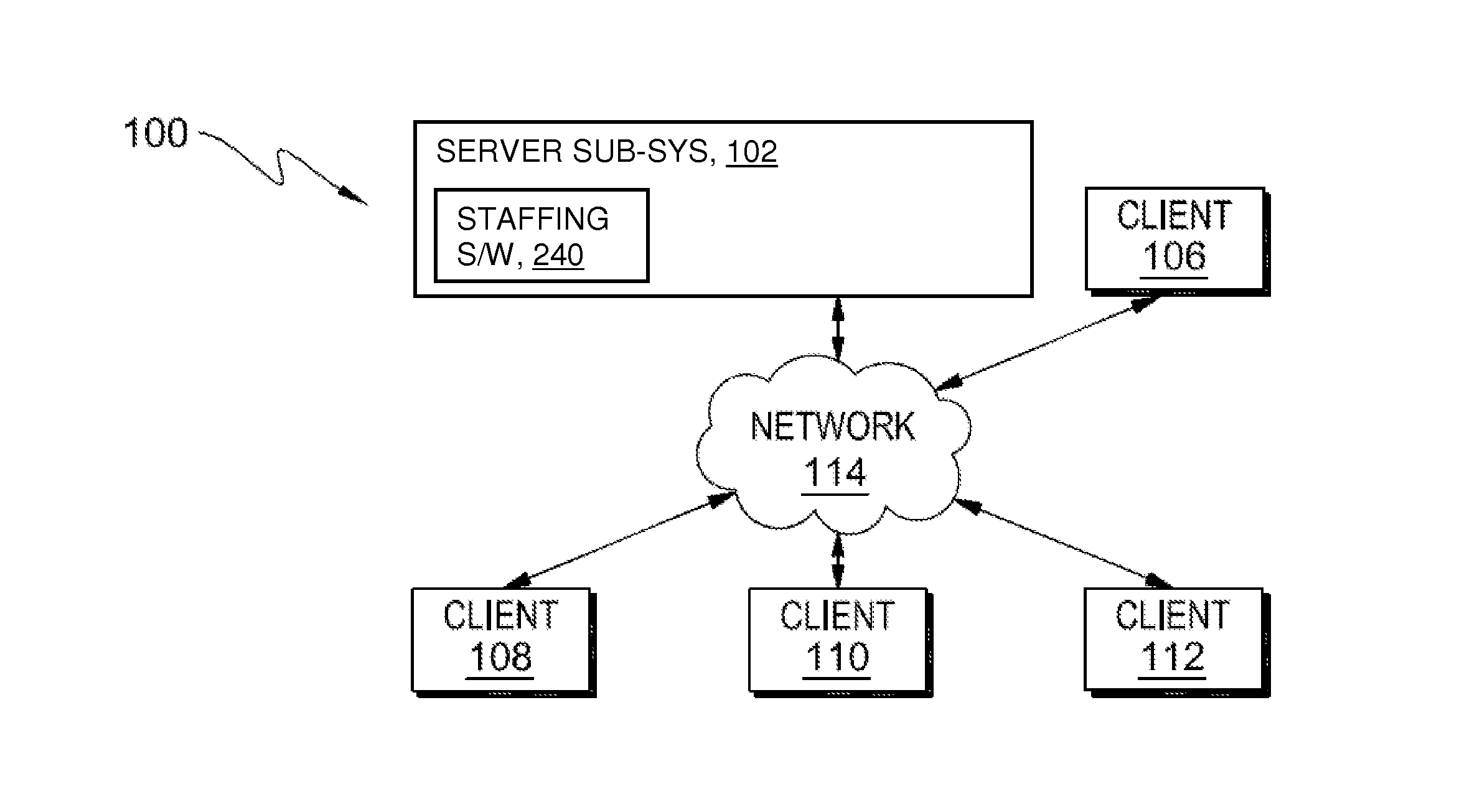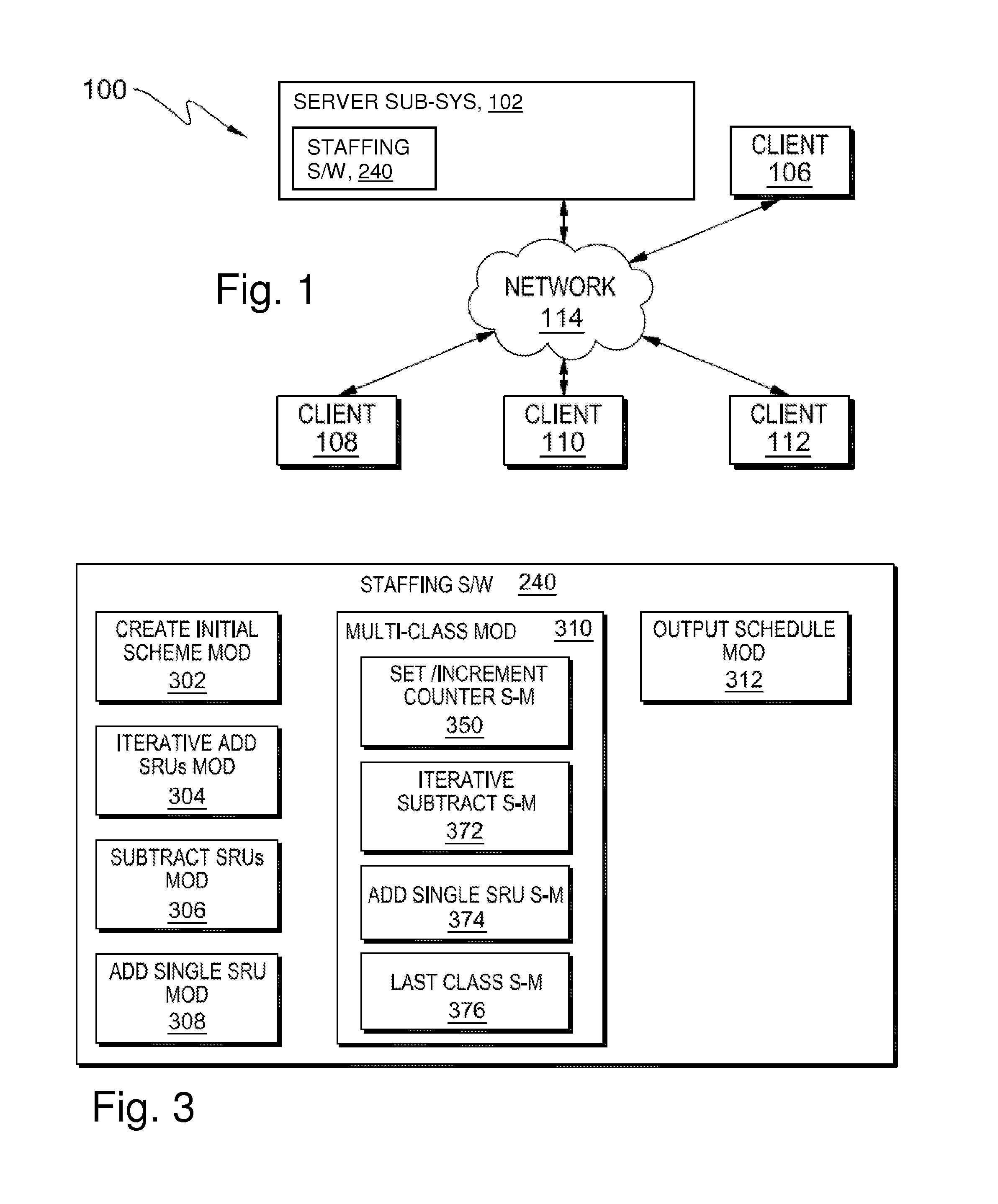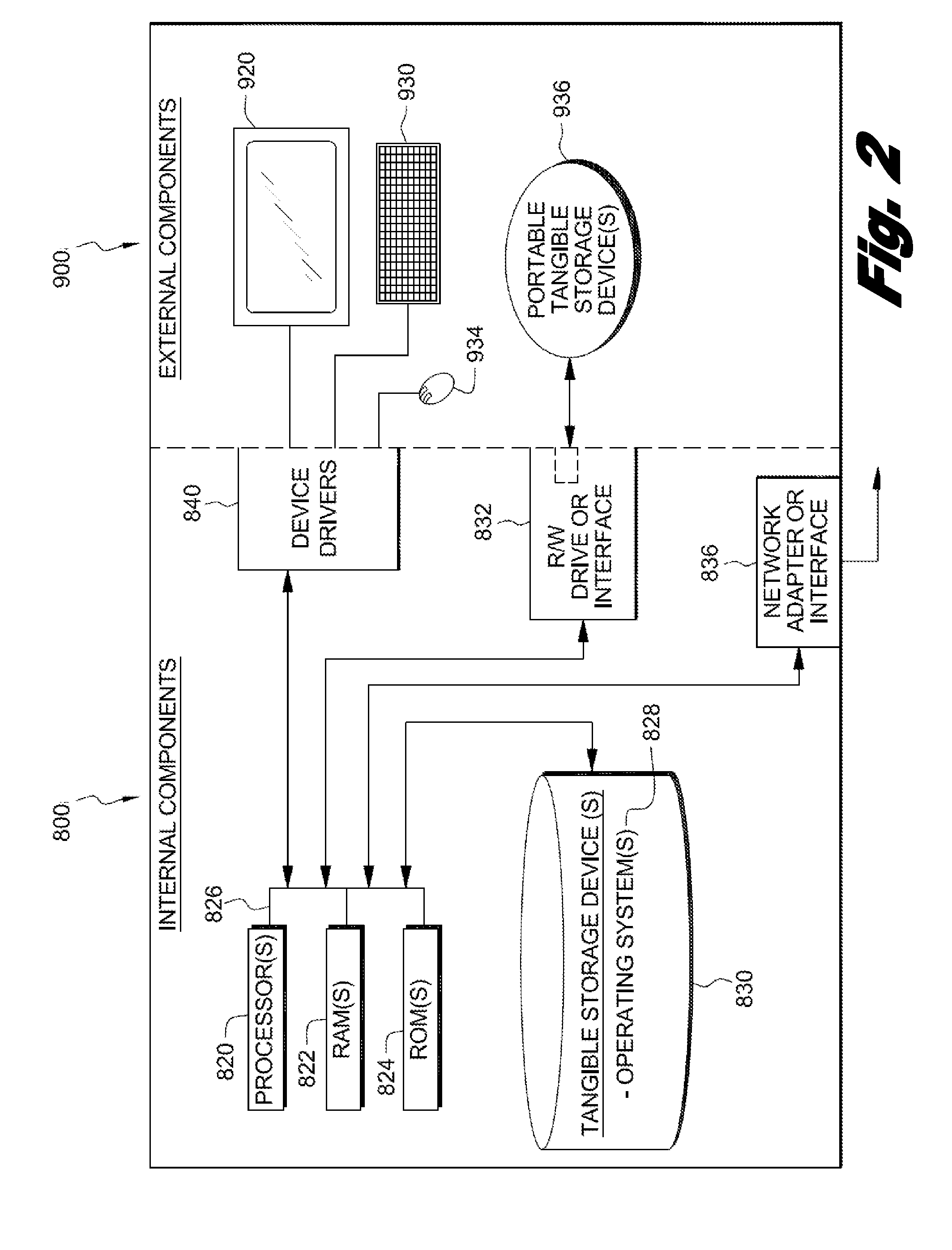Optimizing staffing levels with reduced simulation
a technology of simulation and optimization, applied in the field of computerized determination of staffing levels, can solve problems such as call center lost calls
- Summary
- Abstract
- Description
- Claims
- Application Information
AI Technical Summary
Benefits of technology
Problems solved by technology
Method used
Image
Examples
Embodiment Construction
[0015]The DETAILED DESCRIPTION section will be divided into the following sub-sections: (i) First Sub-Section; and (ii) Second Sub-Section; (iii) Reduced Simulation Embodiments; (iv) An Example Of Suitable Computer Hardware; and (v) Definitions.
I. FIRST SUB-SECTION
[0016]As shown in FIG. 1, computer system 100 includes server computer 102; client computers 106, 108, 110, 112; and communication network 114. As further shown in FIG. 1, server computer 102 includes staffing software program (or, simply, staffing software) 240. The staffing software optimizes staffing levels in a problem ticketing system, and will be discussed in greater detail, below. While the staffing software program 240 of the present invention is illustrated as installed entirely in the server computer 102 in this embodiment, the staffing software could alternatively be located, in whole or in part, in one or more of the client computers 106, 108, 110, 112.
[0017]An embodiment of the present invention will now be de...
PUM
 Login to View More
Login to View More Abstract
Description
Claims
Application Information
 Login to View More
Login to View More - R&D
- Intellectual Property
- Life Sciences
- Materials
- Tech Scout
- Unparalleled Data Quality
- Higher Quality Content
- 60% Fewer Hallucinations
Browse by: Latest US Patents, China's latest patents, Technical Efficacy Thesaurus, Application Domain, Technology Topic, Popular Technical Reports.
© 2025 PatSnap. All rights reserved.Legal|Privacy policy|Modern Slavery Act Transparency Statement|Sitemap|About US| Contact US: help@patsnap.com



